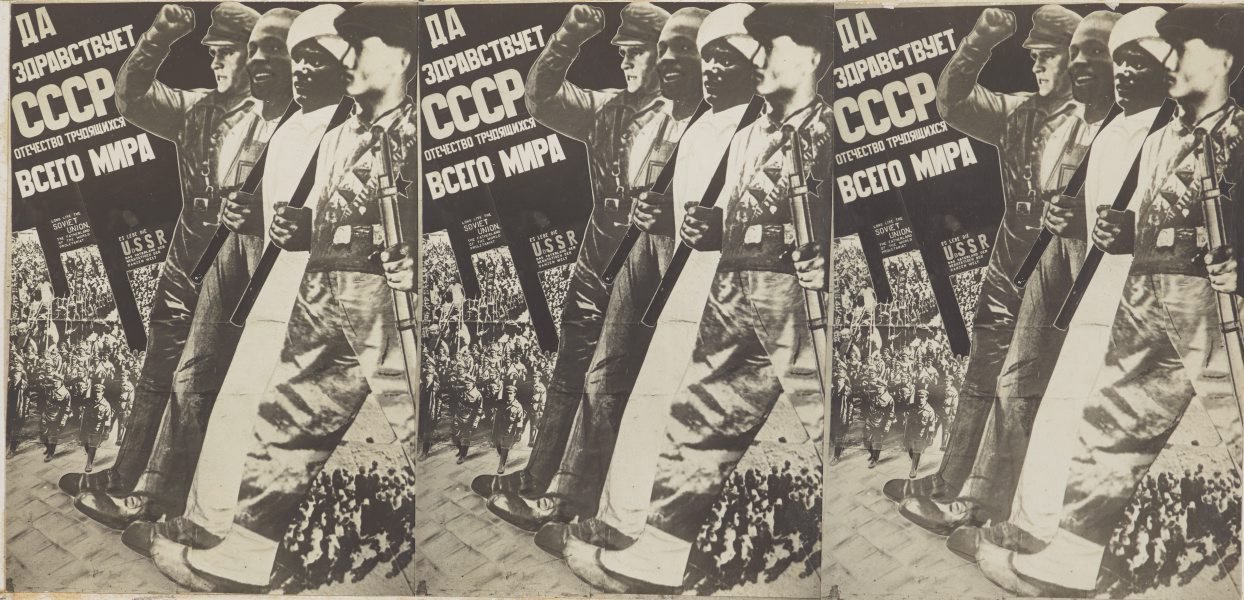Title
Design for the poster 'Long live the soviet union - the fatherland of the world proletariat'
1930
Artist
-
Details
- Alternative title
- Poster for the fourteenth anniversary of the October Revolution
- Date
- 1930
- Media category
- Photograph
- Materials used
- photocollage
- Edition
- unique
- Dimensions
- 92.5 x 18.9 cm image: 16 x 23.5 cm sheet
- Signature & date
Signed l.r. recto paper backing, pencil '[Russian]'. Dated l.l. recto paper backing, pencil '1930'.
- Credit
- Purchased with funds provided by the Photography Collection Benefactors' Program 2016
- Location
- Not on display
- Accession number
- 351.2016
- Copyright
- Artist information
-
Gustav Klutsis
Works in the collection
- Share
-
-
About
Gustav Klutsis (1895-1938) was born and educated in Latvia. After two years at art school he was drafted into the Russian army and participated in the 1917 Russian Revolution. He resumed his art studies in Moscow from 1919 in the studios of Konstantin Korovin and Kazimir Malevich. As Russian scholar Margarita Tupitsyn has noted, ‘Acclaimed for his spatial constructions, as well as for his designs of practical structures like kiosks, tribunes, and radio-orators, Klutsis became a professor of colour theory at the constructivist school VKhUTEMAS (Higher State Artistic-technical Workshops) in 1924. In addition to being an accomplished constructivist, by the early 1920s, Klutsis had become a pioneering developer of photomontage. Klutsis applied photomontage to innovative designs for posters, magazines, and books throughout the 1920s and 1930s, and the technique was swiftly adopted by other members of the Soviet avant-garde. In addition to being one of photomontage's leading practitioners, he also participated in debates on the subject, published essays on his theories, and contributed to major exhibitions, including the Internationale Presse-Ausstellung (Pressa) 1928, and Film und Foto 1929. Alongside the works of Aleksandr Rodchenko, Varvara Stepanova, El Lissitsky, and Sergei Senkin, Klutsis's work stands as one of the strongest examples of the post abstract Soviet avant-garde.’ 1.
Klutsis met VKhUTEMAS student Valentina Kulagina in 1920 and they married the following year. Both were devoted members of the Communist Party and worked closely together as designers and artists. Klutsis was however arrested in 1938 soon after returning from the Paris World Fair where he had created many designs for the Soviet pavilion. He was executed three weeks later.
1. M Tupitsyn, Klutsis & Kulagina: photography & montage after constructivism, 2004 ICP/Steidl NYC & Gottingen p 247
-
Exhibition history
Shown in 2 exhibitions
Gustav Klutsis & Valentina Kulagina: photography and montage after constructivism, International Center of Photography, New York, New York, 12 Mar 2004–30 May 2004
Experiment- Life- Politics. Bauhaus photography x Russian avant-garde, Galerie Priska Pasquer, Köln, 02 Mar 2013–14 May 2013
